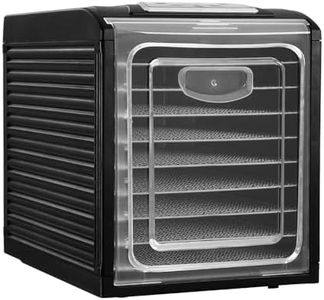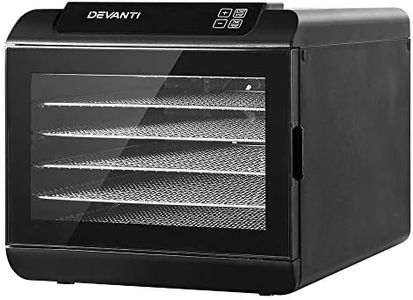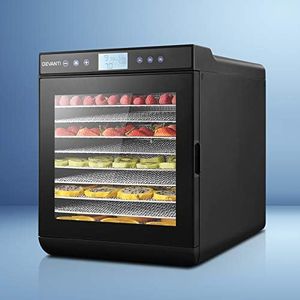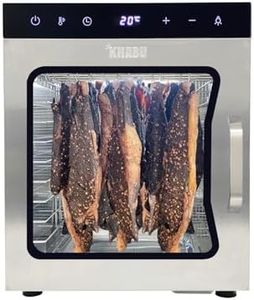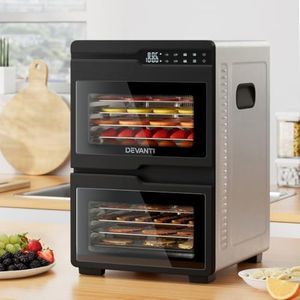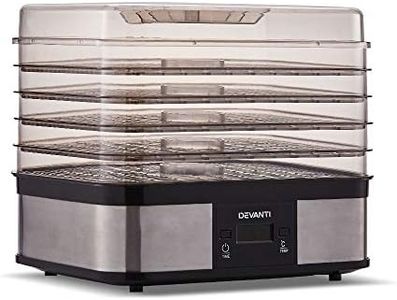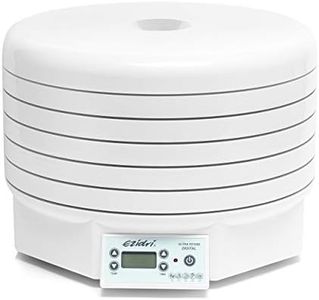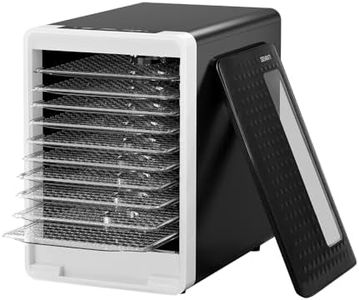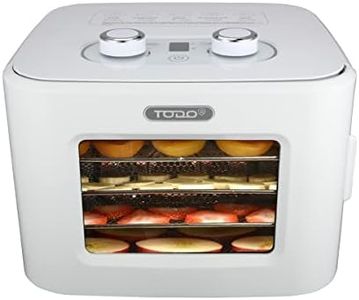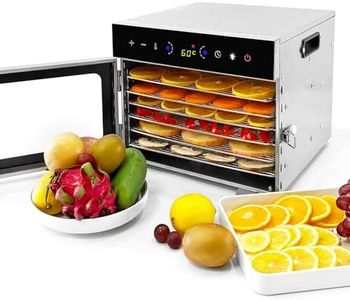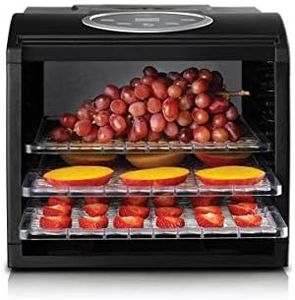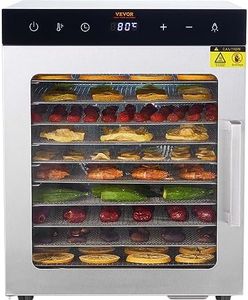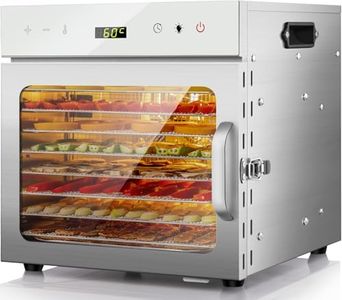We Use CookiesWe use cookies to enhance the security, performance,
functionality and for analytical and promotional activities. By continuing to browse this site you
are agreeing to our privacy policy
10 Best Food Dehydrators
From leading brands and best sellers available on the web.Buying Guide for the Best Food Dehydrators
Choosing a food dehydrator can help you make delicious, healthy snacks at home, like dried fruits, jerky, or vegetable chips. To find the best one for your needs, it's helpful to think about how much food you want to dry at once, how often you plan to use it, and which features would make the process easier for you. Understanding the key specifications will help you make a confident and informed choice.CapacityCapacity refers to how much food you can dry at one time, usually measured by the number of trays or the total drying area. This is important because if you often want to dehydrate large batches—maybe for preserving garden harvests or meal prep—you'll want a larger capacity. Small families or occasional users might be fine with a compact model with fewer trays. Pick a size based on how much you plan to dry in a single session; larger models are good for big jobs, while smaller units save space for less frequent or lighter use.
Temperature RangeThe temperature range tells you the minimum and maximum heat the dehydrator can achieve. This matters because different foods dry best at specific temperatures: herbs need low heat to preserve flavor, fruits need a bit more, and meats require higher temperatures for safety. If you want to dry a variety of foods, look for a model with an adjustable range—generally, anything from about 95°F to 165°F covers most needs. Choose a dehydrator with the ability to reach the temperatures that match what you want to dry most often.
Airflow Type (Horizontal vs. Vertical)Airflow design describes how air moves inside the dehydrator and affects drying consistency. Horizontal airflow (side-to-side) is often found in box-shaped units and provides even drying without rotating trays, which is great for mixed batches. Vertical airflow (bottom or top fans) is usually in stackable tray styles and may require tray rotation for uniform results. If you value even drying or want to dehydrate different foods at once, horizontal is generally preferable. For simple, single-food tasks, vertical airflow can work and may be more compact.
Timer and Auto Shut-OffTimers let you set how long you want the dehydrator to run, and an auto shut-off turns it off when the time is up. This is important for convenience and safety, especially if you'll be drying food overnight or when you're not at home to monitor it. If you want to set it and forget it, or if you’re often multitasking, these features are very useful. If you prefer checking progress manually, a basic model without these extras might be fine.
Ease of CleaningEase of cleaning means how simple it is to wash the trays and inside surfaces. Trays that are dishwasher-safe or nonstick save time and effort. This is important because dried food can be sticky or messy, and easy-to-clean parts help make your overall experience more pleasant and less of a chore. Consider your tolerance for cleanup when choosing—some models have lots of small nooks, while others are designed for quick washing.
Noise LevelNoise level refers to how much sound the dehydrator makes while running. Some dehydrators can be a bit loud, much like a fan or small appliance, which might be distracting if you have a quiet home or tend to run it overnight. If a quieter kitchen is important to you, look for user reviews or manufacturer specs about noise, and choose accordingly.

